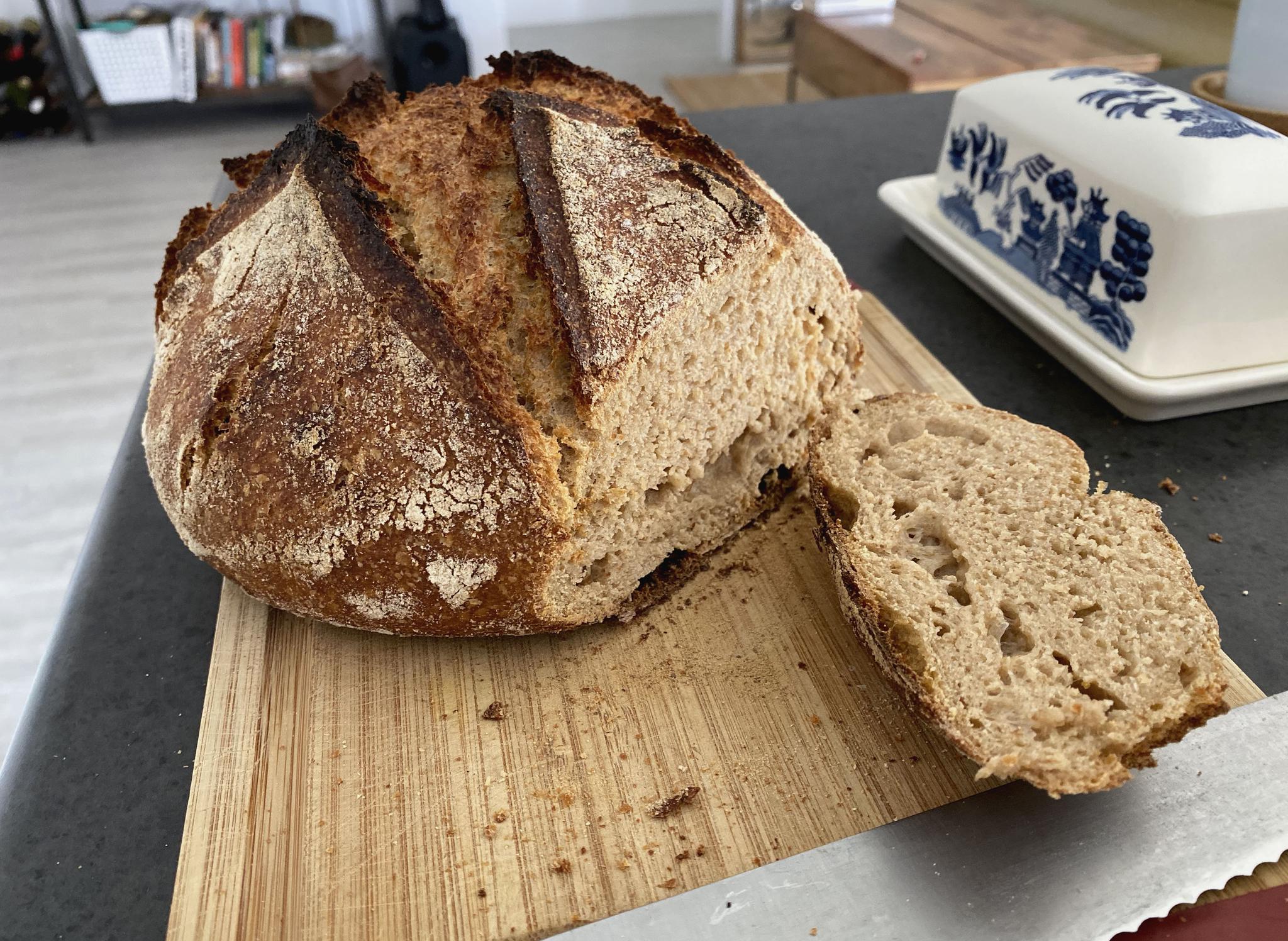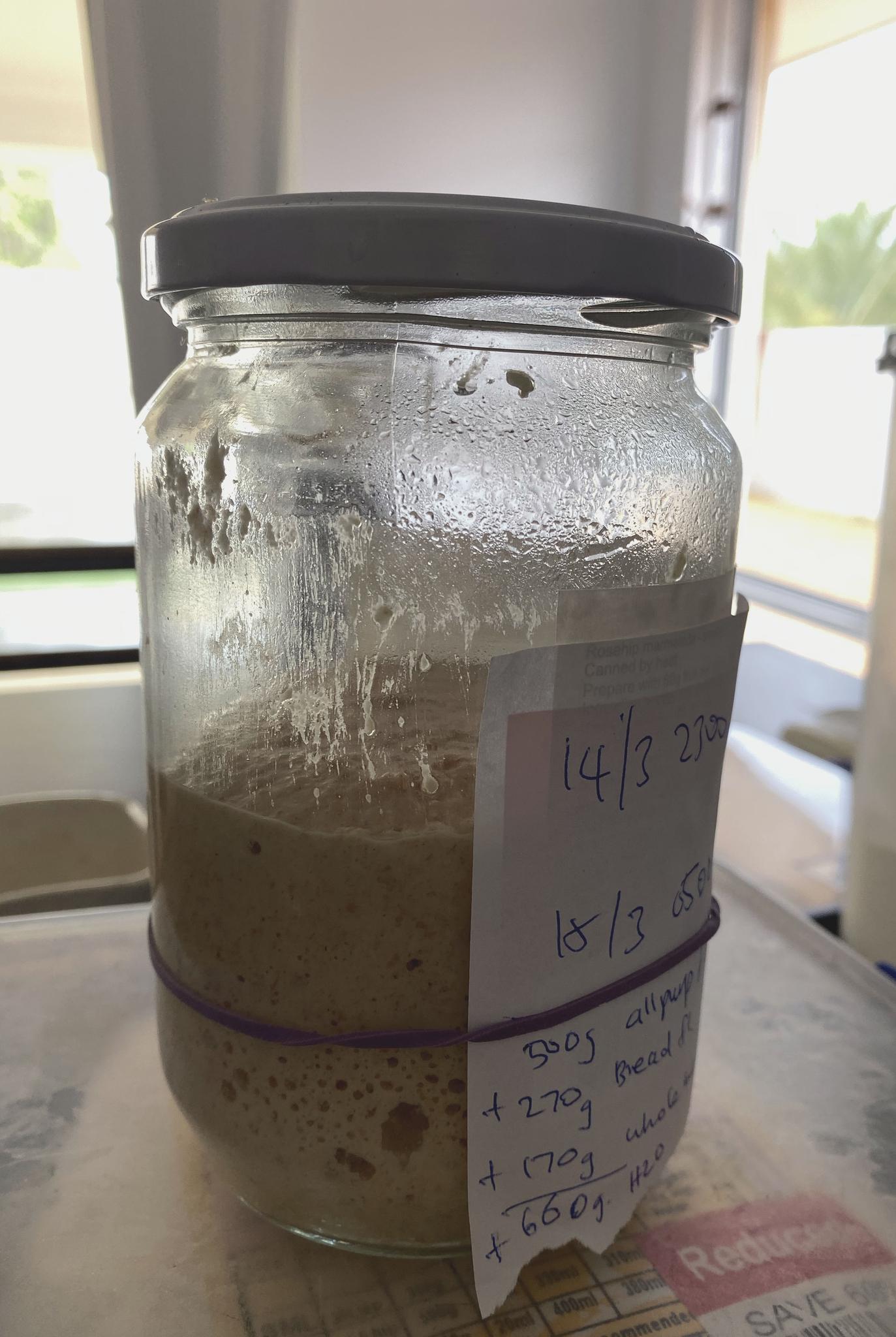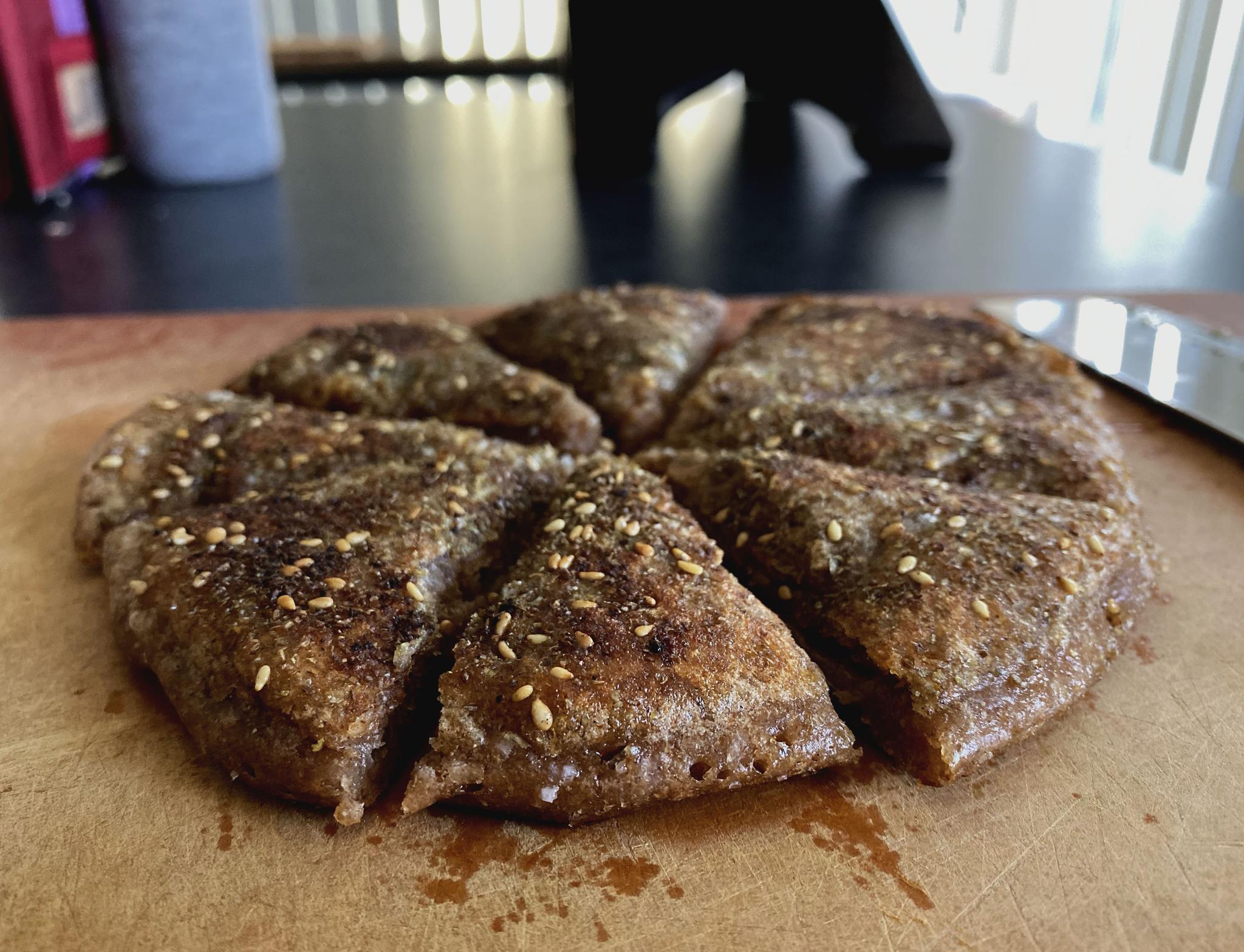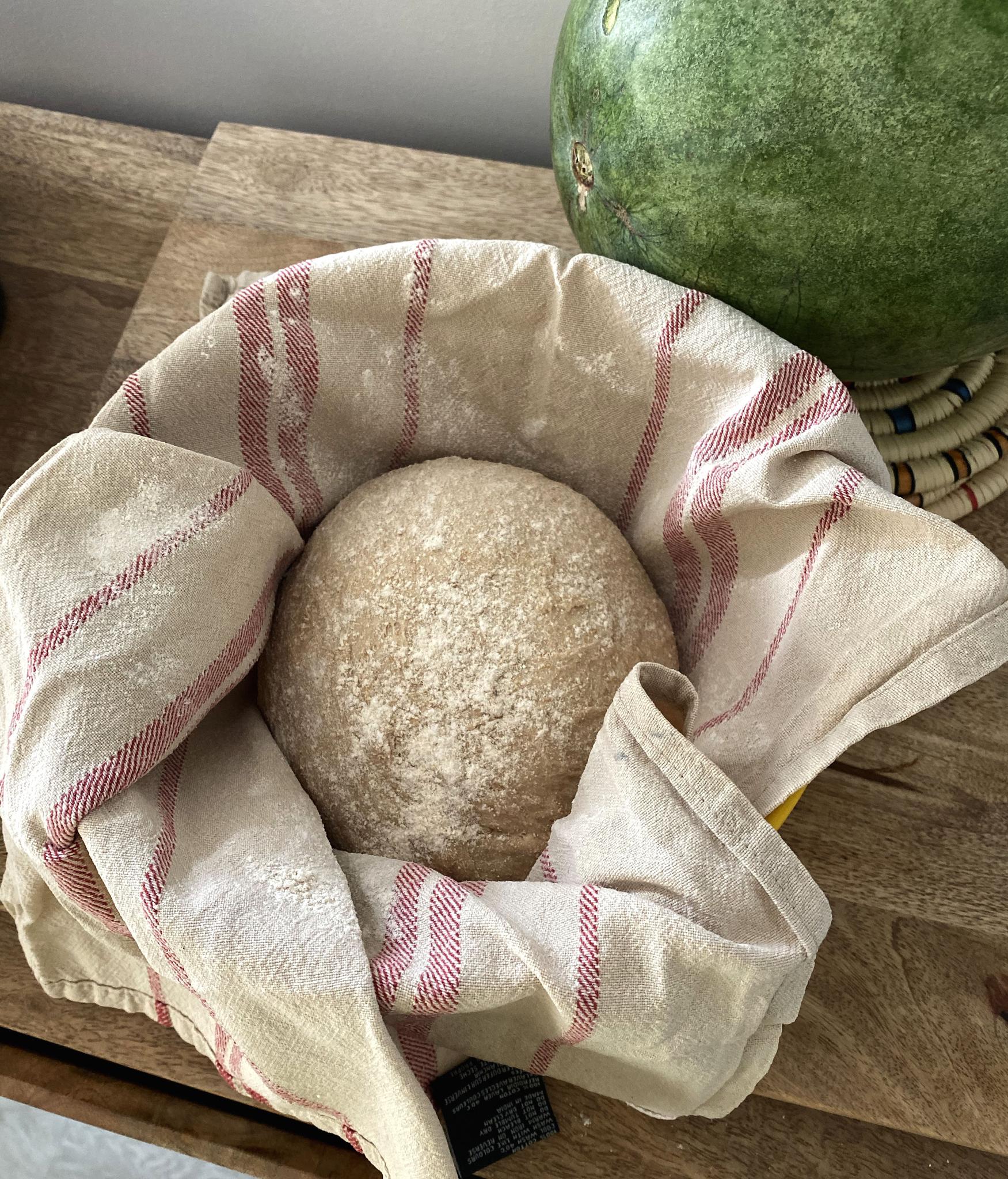How the Corona Virus led me to sourdough
While the Corona Virus is sweeping around the world...
I’ve decided to take a positive stance on this time at home by learning how to bake sourdough. The presence of life-changing events need not be so dire and calamitous. At least, that’s how I see it.

The sudden appearance of – what I like to call Ncov – has been the best thing since the election of Donald Trump. Ncov is obviously an evolving incident, one that affects many people, but it forces us to learn and grow.
While the world reports doom and gloom, we forget moments like this comes resilience. Humans have been forced to adapt and adjust to a number of events throughout history. In my three decades of being alive, I’ve lived through Princess Diana’s death, the Y2K bug, 9/11, the climate change movement and the exorbitantly fluctuating prices of bananas. I never thought the virality of “toilet paper misinformation” and the over-reporting of novel news would send the public into a state of frenzy. What has the world become? – I ask myself.
It seems the need to self-quarantine has become the new normal. All of a sudden we have a great deal of time to spend at home. This is the best thing since sliced bread – because now I have the time to actually make my own bread. This precious time can be used in so many ways. So why are we all getting anxious about Ncov for?
Personally, I’ve carefully followed the emergence of Ncov for a couple of months. I flew over to Manila, the Philippines at the end of January, just as the virus chatter began to surface. I paid attention to what media reports on and the public’s reaction. I even had a chat with a local taxi driver who asked me how he could go about protecting his newborn baby from getting sick.
As more countries go into lockdown and adopt travel bans, I figured it was time to control how much news I consume. I partially switched off and decided to teach myself through the aid of YouTube – how to make a no-knead sourdough.

Firstly, I needed a starter. Thankfully, we can all make our own starters with a jar, a heap of flour, water, a warm spot and some TLC. Taking care of a starter is like watering a plant or feeding your pet daily. I named my starter Filbert because it helped me to acknowledge it as a living organism. In the initial stages, Filbert requires once daily feedings of flour and water. Setting my timer on my phone at 1600 hrs every day, I made sure Filbert was fed, happy and wafting of fermenting sourness.
Each day I pulled out my
digital scale, two metal bowls, a spoon
and my notebook with all my bread making notes and equations. Some days I
questioned if my math was correct, and other days I felt dread watering
down my discarded starter and pouring it down the drain. I made one
attempt to transform the discarded starter into a crumpet. With the
addition of some bicarb soda, salt and 5 minutes of whisking – it turned
into a Breton style pancake – not as enjoyable as I wanted it to be. It
left me deflated not knowing how to re-purpose what I worked so hard to
produce. I sporadically searched for more recipes and stumbled upon one
that was simple and realistically achievable. All I had to do was pour
the starter straight into a hot oiled pan and season one side with a
little salt and za’atar seasoning. It’s like a scallion pancake, but
Lebanese style – a perfect mid-afternoon snack. I was so happy when I
made this discovery, just to learn that I could now put Filbert in the
fridge and reduce the feeding down to once per week.

Between day five and seven, my relationship with Filbert was distant. During this week, I was also looking after my dog, Arnie – who was post-op after a traumatic incident. Taking care of him was a full-time gig. Caring for Arnie took a lot out of me. By the end of the week, my morale was in my boots. I hadn’t left the house for anything more than errands or pertinent work meetings. I became too lazy to feed him, I kept snoozing the alarm and I simply made excuses in my own mind that maybe I didn’t have it in me to make bread.
Then Saturday came. I invited friends over and hosted my first brunch at my house. I blamed it on the dog, but deep down I needed the social interactions to create a bit of cheer. By the evening I was brimming with motivation. I started re-watching and taking notes from the YouTube sensation Joshua Weissman, the bread master. I made a realistic schedule of how I would attack this loaf, including the times counted out on my fingers and chicken scratch notes of what to do.
I started preparing the “levain” at almost midnight on Saturday night. The first spawn of Filbert is named Henri. Take a small amount of Filbert and you make a new starter to mix into the loaf the next day. Henri sat on top of my water cooler, the most consistently warm spot in my kitchen right next to my radiant white good – Frigo, the fridge. I popped Henri into a jar and popped on an elastic band at the level he started at. The next morning, I was pleasantly surprised he rose about two inches. I said to myself “I should’ve never doubted you, Filbert.”
Mixing, smearing, flipping, folding – crusty flour all over my arms. I spent the whole of Sunday creating and bringing the dough to life. Making bread on a Sunday is great because you fill the wait times in-between with trips to the market and other miscellaneous activities. Each time I looked at my dough I said to myself “this looks nothing like the YouTube video.” At all points of the process, I found ways to doubt my own creations. I figured my hands are small, and there was double the amount of dough, so I could only work the dough so efficiently. Shaping the dough into balls was a slightly difficult task. The dough is soft and sticky, and as always it looks so easy in the video. I couldn’t manage to replicate half the tricks he taught, but I came up with my own technique to make it round. Cradle the dough and spin like a wheel, repeat this in a speedy motion and the dough shall form a nice mound. I was satisfied my efforts were worth it once it was time to prove the bread, which is placing it in the fridge for 14 hours.

First thing Monday morning, I woke to crank on the oven to a whopping
260 degrees Celsius. The sheer heat of the oven is intense as it hits
you in the face as you open the oven. Being my first time, I decided to
copy what Joshua did verbatim. Cooking the loaf dutch oven style is new
to me. A friend of mine told me cooking in this style keeps it moist. As
I carefully followed the instructions, with frequent peeks inside the
oven to check Henri was growing okay, it soon came time for the reveal. I
was overwhelmed with joy when I first laid eyes on my finished
creation. It’s been a long time since I have felt this proud of my own
achievements. I felt this urge to tell my immediate circle what I had
achieved. Not being a fan of social media, it involved sending people
pictures individually. Henri was perfect like a firstborn sourdough
should be.
I feel at ease of getting lost in newly learnt skills.
I’ve started a
“ginger bug”, which is a starter to make ginger beer. It only involves
ginger, water and sugar – just my style of simpleness. So now I’ve come
to realise that slowing down and staying home is not such a bad thing.
With the power of the internet and the will to learn, valuable life
skills are just waiting around the corner. Thank you Ncov for igniting
that hunger for knowledge and for slowing my life down to a more
manageable pace.
